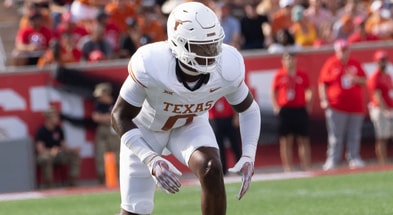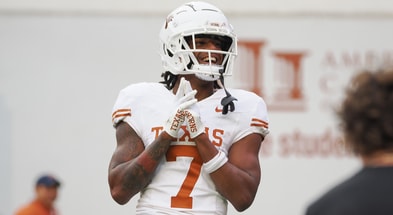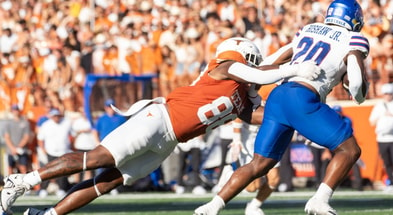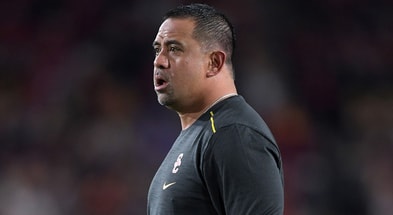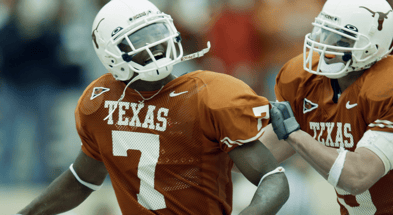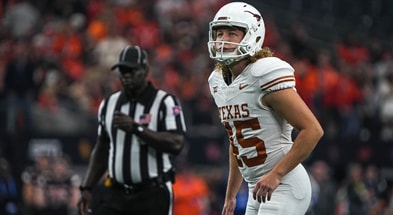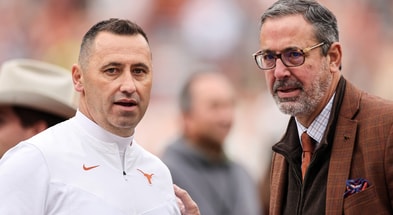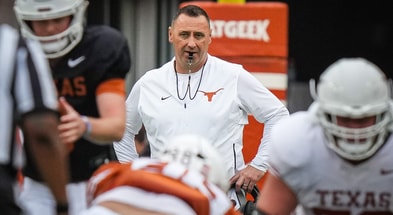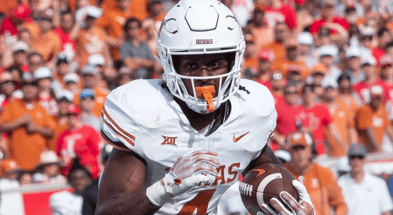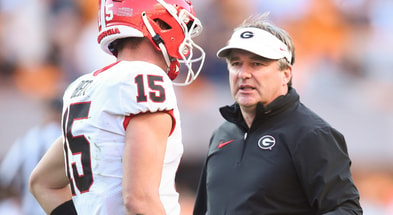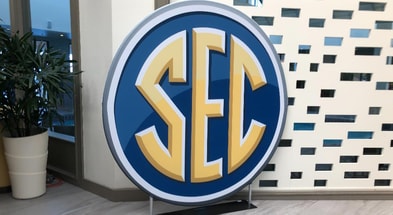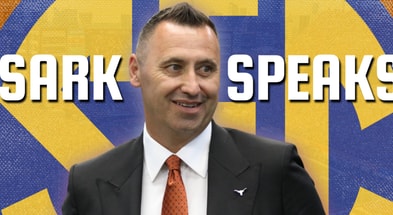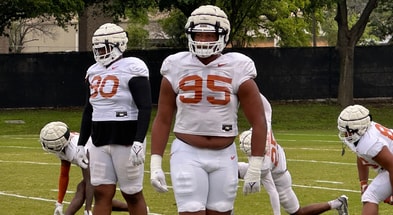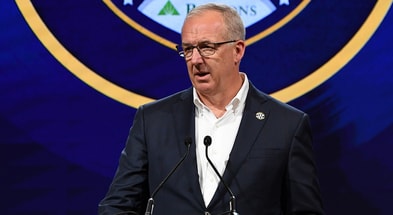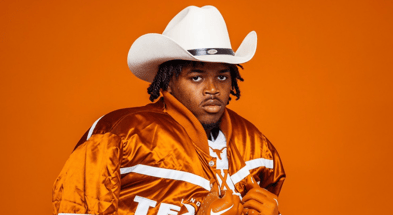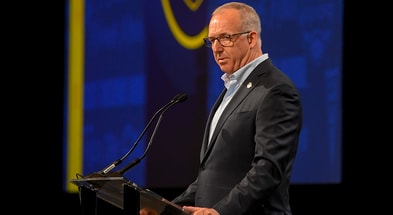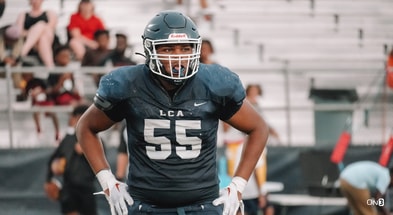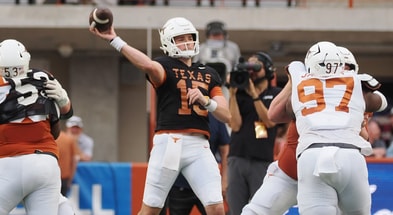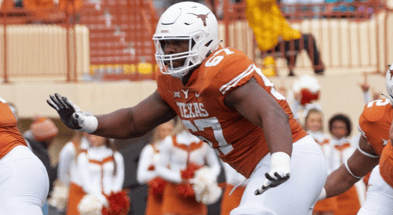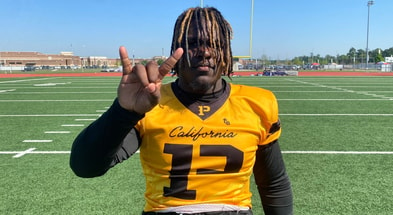Despite robust operations, Texas coaches, NIL leaders emphasize need for large-scale engagement
The donors who bought $1000 tickets to the Texas One Fund event at Austin Country Club on Thursday night were not the ones who needed encouragement to support the Longhorn-centric NIL collective. Their presence was evidence of an understanding that engagement and participation is needed to keep the Texas One Fund’s efforts strong
[Join Inside Texas and get three months for $1 OR half off a one-year subscription!]
As was the presence of UT student-athletes like Quinn Ewers, CJ Baxter, Jaylan Ford, Jordan Whittington, Dylan Disu, Trill Carter, Rori Harmon, Taylor Jones, Madison Booker, and others from softball, swimming and diving, and volleyball. Current Longhorns were on hand to show gratitude and connect with those who had provided their financial support for Name, Image, and Likeness.
But one of the main messages that was disseminated from event organizer Doc Darilek, Texas One Fund president Patrick “Wheels” Smith, and UT head coaches Steve Sarkisian, Rodney Terry, and Vic Schaefer was that large-scale support from the vast UT fanbase was needed in order to maintain Texas’ NIL efforts.
“From the inside out, you’d be real scared because it’s tough sledding,” Smith said. “If we can galvanize our fan base, our alumni base — we’re talking to charities left and right, getting them on board — we need everybody on board. We’re talking to the Texas Exes about things. We’re working on stuff for the next 5-10 years to make Texas athletics when we go into the SEC untouchable. I’m serious about that.
“We’re the only university in the country that has the ability to do it. But it’s going to take people saying ‘you know what, I’ll commit here. I’ll do this. I’ll contribute this.’ That’s where we can set apart from everybody, because of our alumni base at the University of Texas.”
The head coaches spoke about their approach to NIL. Sarkisian repeated his often-used but always-effective mantra of adapt or die. All three coaches mentioned that if NIL is criteria No. 1 for a recruit, then that’s not the type of recruit they’re looking for.
“I try to get them to come to the University of Texas before I ever mention NIL,” Sarkisian said. “NIL is the last thing we talk about. We don’t lead with it. We finish with it.”
Sarkisian described NIL as a bonus, but he would add, “quite frankly, nowadays in college athletics, it’s a requirement because every other school in the country has some way, shape, or form of utilizing NIL.”
Schaefer described a situation where he was seeking to fill his one available roster spot for the 2023-24 season with a player from the portal. Schaefer and his staff thought they had a chance with the player, but the unnamed recruit elected to sign with another school within the Big 12.
The reason Schaefer was given? “They threw a bag of money at me,” he recalled the prospect saying.
Sarkisian accordingly emphasized the need for large-scale engagement. “At the end of the day, we have 550,000 living alumni at this university, and all of us can play a part in the success of this athletic program,” he said.
Skeptical donors might already give money to the Longhorn Foundation and balk at the idea of donating directly to student-athletes. Organizers tried to dispel that notion.
Andrew Hamor, a Texas executive senior associate athletic director who oversees the Longhorn Foundation, was on hand at the event and endorsed the efforts of the Texas One Fund.
“You’re all here because you’re already invested,” Hamor said. “But we need you to go get your friends and be invested, too.”
He described Texas One Fund contributions as a way to take support of UT athletics to another level, a striking endorsement from someone who might stand to lose donations to the LHF because of that support.
It underscores a knowledge that funding the Texas One Fund allows the Longhorn athletic program to keep and support top talent, but officials emphasized it goes further.
“I know from afar, it looks like you’re just giving money to a kid and you want to support Texas athletics, but it’s much more than that,” Sarkisian said. “There’s a connection that our student-athletes want from you, and I think there’s a greater return that you can get back from them as well.”
[Subscribe to the ON TEXAS FOOTBALL YouTube channel for daily videos from Inside Texas!]
Terry echoed those sentiments.
“What we talk about a lot with our guys is start building your network,” Terry said. “Start really trying to develop relationships. Don’t just play basketball and be here and not get a chance to connect with important people that will not only help you now, but also be a part of your lives later when one day that basketball stops bouncing.”
Student-athletes connected with luminaries from the Austin business world and beyond at the event. Athletics were discussed, of course, but so too were professional interests, job opportunities, and more.
Plus, those positives are in addition to the community service aspect of the Texas One Fund. Student-athletes don’t get paid because of their athletic ability. They are paid for charitable appearances, such as working with patients at Dell Children’s Hospital or attending an event for Collins’ Hope.
All those charitable achievements in the Longhorn and greater Austin communities were meant to show supporters that their efforts did more than just put money in player’s pockets. Even so, there was an underlying message meant for those outside of the room.
“There are a lot of people who have done a lot for NIL at Texas: volunteering, just coming on board,” Smith said. “To dovetail along with what Doc said, a lot of this stuff isn’t ‘hey, it’ll run by itself.’ It’s people putting all the effort.”
